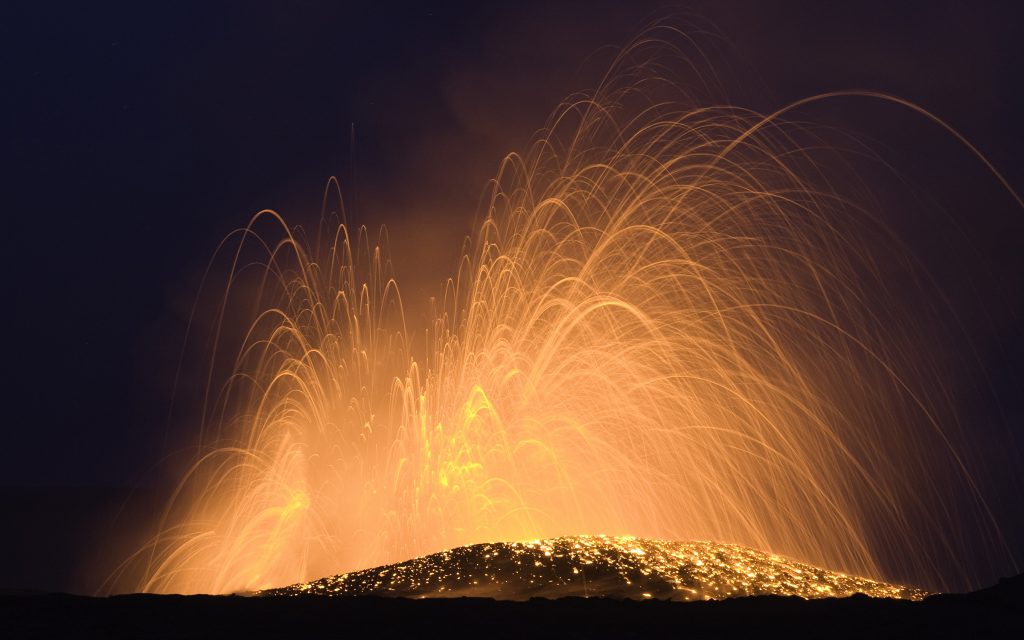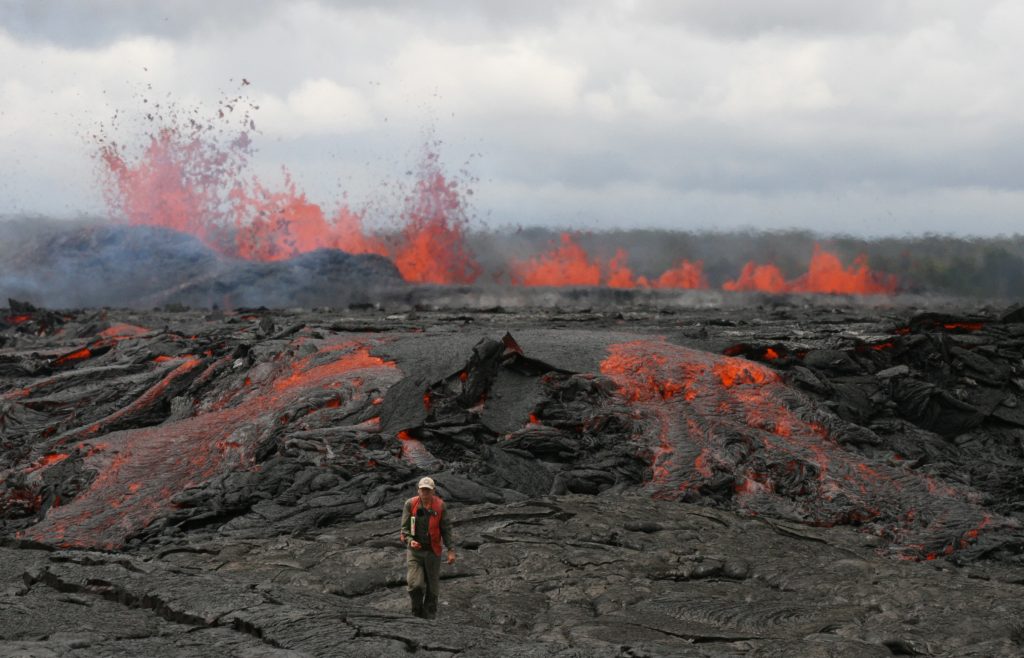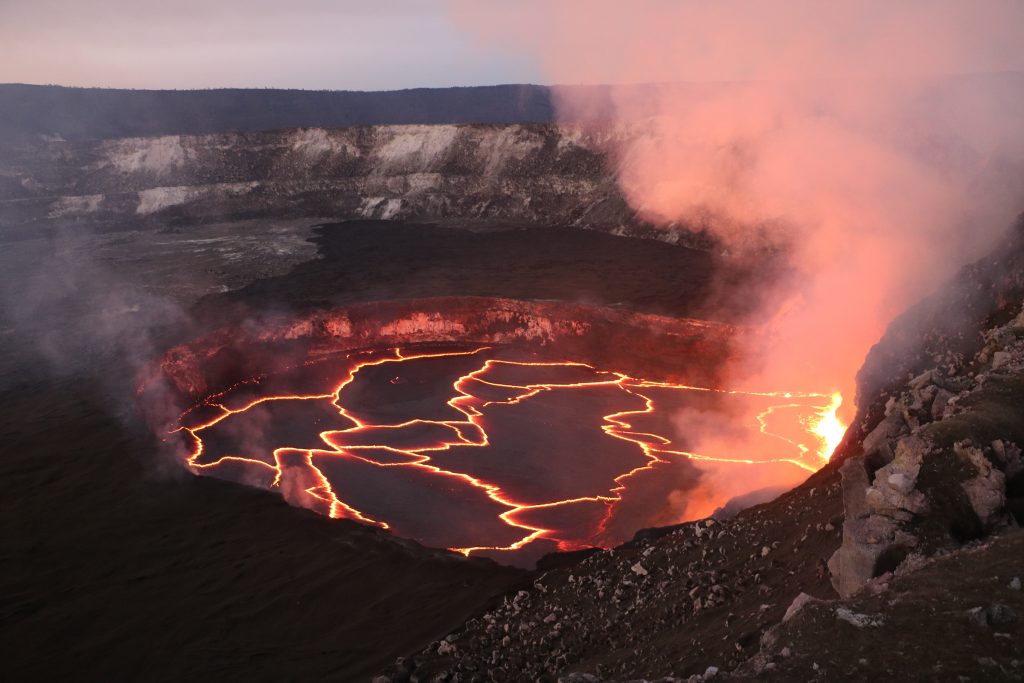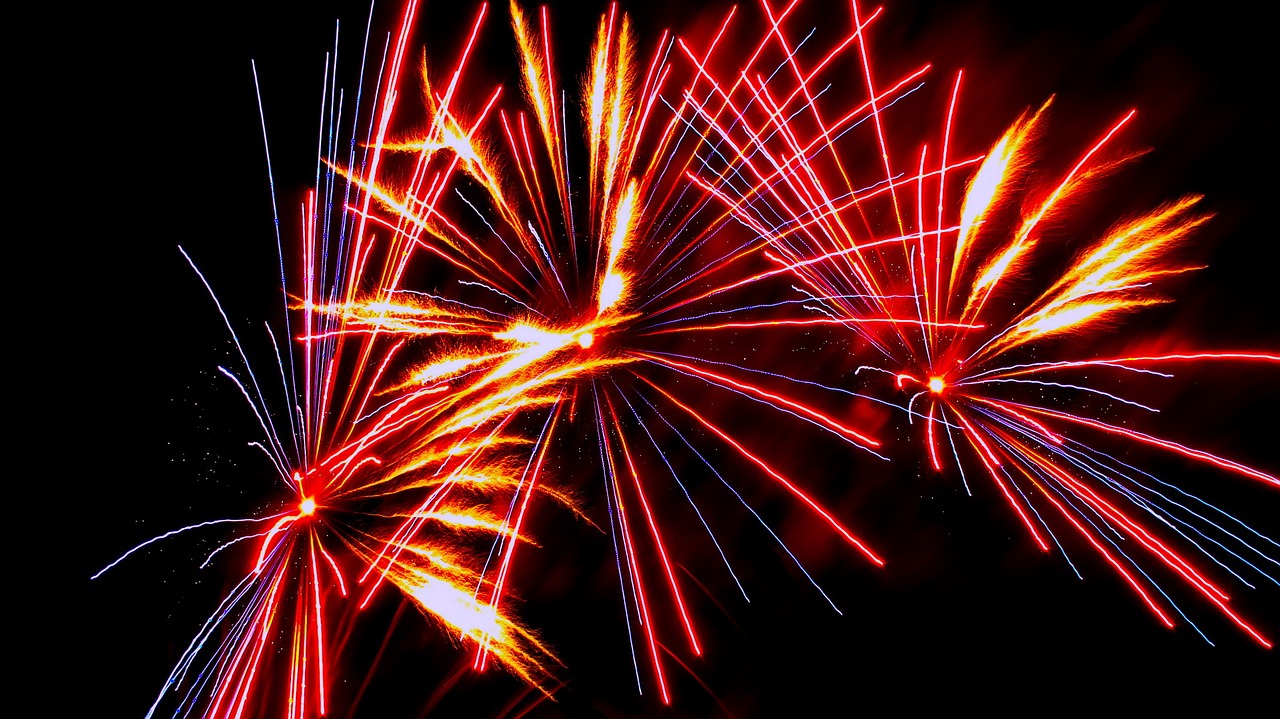Kīlauea Rivals Fourth of July Fireworks
With July 4th just around the corner, we look forward to the long-standing traditions of Independence Day—parades, picnics and especially, fireworks! The holiday hardly seems complete without a brilliant display of pyrotechnics as its grand finale. It’s fun to hear delighted spectators “ooh” and “ahh” with each boom and burst of color as exploding fireworks light the night sky.
On the Island of Hawaiʻi, similar sounds of wonder and delight can be heard on Kīlauea Volcano, which, for many years, has captivated onlookers with its own version of “fireworks.” From small flows oozing at a snail’s pace to torrents of molten rock shooting skyward, red-hot lava attracts crowds of enthralled observers, like moths to a flame.
So, with the Fourth of July serving as inspiration, this week’s “Volcano Watch” is a photo essay featuring notable images from Kīlauea Volcano’s two ongoing eruptions: East Rift Zone (Pu‘u ‘Ō‘ō), which began in 1983, and summit (Halemaʻumaʻu), which began in 2008.
Kīlauea has been erupting nearly non-stop for the past 34-plus years. But those years have been punctuated with stunning and dramatic eruptive events that rival the island’s best fireworks shows. Examples include the episodic high lava fountains erupted during the first few years of the Pu‘u ‘Ō‘ō eruption and the spectacular fireworks-like displays of incandescent spatter from the explosive interaction of lava and seawater at ocean entries.
Have a safe and happy July Fourth holiday—and enjoy these “fiery” images of Kīlauea. More eruption photos are available on the USGS Hawaiian Volcano Observatory website.
“Volcano Watch” is a weekly article written by U.S. Geological Survey`s Hawaiian Volcano Observatory scientists and colleagues.

This spectacular lava fountain, erupting from Pu‘u ‘Ō‘ō on June 30, 1984, lasted just over 7 hours and reached a height of 1,043 feet. It was one of 44 high lava fountains erupted during the first 3.5 years of Kīlauea Volcano’s ongoing East Rift Zone eruption, which began in January 1983. Fallout from the fountains piled up around the vent, building the cinder-and-spatter cone that was named Pu‘u ‘Ō‘ō. The lava fountains, some of which reached heights greater than 1,500 feet, could be seen tens of miles away and their radiant heat could be felt more than a mile from the vent. USGS photo, J.D. Griggs

On the evening of June 30, 2008, littoral explosions at Kīlauea Volcano’s Waikupanaha ocean entry created a fireworks-like display as incandescent fragments of lava flew through the air. When molten lava entered the sea, the water flashed to steam, triggering explosions that hurled spatter and other lava fragments up to heights of 164 feet. Spatter accumulating on the sea cliff above the ocean entry formed a littoral cone, aglow here from the fallout of still-hot fragments. USGS photo, D. Dow

On March 6, 2011, USGS Hawaiian Volcano Observatory scientists were stationed along Kīlauea Volcano’s East Rift Zone to monitor the progression of erupting fissures that had opened west of Pu‘u ‘Ō‘ō the day before. Lava spewing from this fissure (background) reached heights up to 100 feet and produced a massive lava flow, visible behind the HVO scientist. This event, known as the Kamoamoa fissure eruption, lasted only five days. USGS photo, N. Richter

The lava lake within Halemaʻumaʻu at the summit of Kīlauea illuminated the vent walls on the evening of Feb. 13, 2017. Circulation within the lava lake causes upwelling and down-welling on opposite sides of the lake. This often results in spattering on the lake surface (right), which creates bright spots on the dark, semi-solid lake crust. Circulation can also pull sections of the crust apart, exposing the molten lava beneath and creating incandescent lines on the lake surface. USGS photo, M. Patrick

This telephoto image from Jan. 19, 2017, shows spattering along a down-welling section of Kīlauea Volcano’s summit lava lake. The main area of spattering was about 32 feet high, but some lava fragments were thrown even higher. Depending on the lava lake level, spattering on the lava lake surface is sometimes visible from the Jaggar Museum Overlook in Hawaiʻi Volcanoes National Park. USGS photo, M. Patrick















